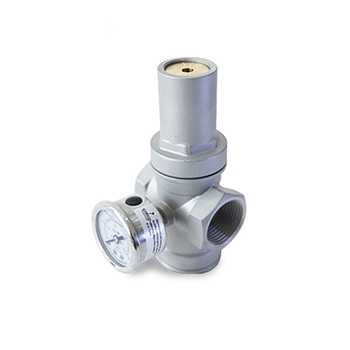What are the Types of Pressure Relief Valve?
With the continuous development and change of science and technology, there are many very functional accessories in our life now, and the pressure relief valve is one of them. A pressure relief valve is a valve that ensures the safety of equipment by discharging pressure. Pressure relief valves are also called safety valves and are widely used in industrial applications. Next, let's take everyone to learn the types of pressure relief valves and their structure and working principles.
Pressure relief valve basics
The pressure relief valve, also known as the safety valve, can be automatically opened and closed according to the working pressure of the system. It is generally installed on the equipment or pipeline of the closed system to protect the safety of the system. When the pressure in the equipment or pipeline exceeds the set pressure of the pressure relief valve, it will automatically open the pressure relief to ensure that the medium pressure in the equipment and pipeline is lower than the set pressure, so as to protect the equipment and pipeline and prevent accidents.
Types of pressure relief valve
Pressure relief valves can be divided into three categories according to the production structure:
Spring pressure relief valve
The spring pressure valve senses the pressure through the valve seat. When the pressure is high, the valve is pushed open to discharge the pressure. When the pressure reaches a safe value, the spring falls back to seal the seated valve. The spring-type pressure relief valve uses the force of the compressed spring to balance the force acting on the disc.
The compression amount of the helical coil spring can be adjusted by turning the adjusting nut on it. With this structure, the opening (set) pressure of the pressure relief valve can be corrected as required. The spring-type pressure relief valve has a light and compact structure, high sensitivity, and unlimited installation position, and because it is less sensitive to vibration, it can be used on mobile pressure vessels.
Lever-type pressure relief valve
The lever-type pressure relief valve uses the lever principle to release the pressure by the valve seat to achieve the safety effect. Because of its simple principle and rough structure. It can only be used for simple devices with low safety and precision values.
The pilot pressure relief valve
Pilot-operated pressure relief valves use the pulse principle to release pressure. When the pressure is too high, the auxiliary valve will open the main valve, and the main valve will be pushed back by the pressure to release the pressure. The structure of this relief valve is very complicated and precise. It is very suitable for large-scale industrial equipment with large capacity, high safety performance, and high precision.
Pressure relief valve structure
The pressure relief valve is composed of a needle valve, a pressure gauge, a main valve, a pilot valve, and a connecting pipe. It is a hydraulic control valve. The main valve is divided into upper and lower parts by the diaphragm, the lower cavity of the diaphragm is the water channel, and the upper cavity is the control room, which controls the opening and closing of the main valve disc. The needle valve, or throttle valve, controls the flow of water in the connecting pipe.
Another channel of control water will generate a static pressure after entering the upper cavity of the main valve through the needle valve responsible for throttling, and the pressure in the upper cavity is equal to the pressure in the flow channel. Since the upper plane of the main valve disc is larger than the lower plane, the pressure of the upper cavity on the disc is greater than the thrust of the water in the main channel to the disc, so that the main valve is in a closed state.
If the water flow pressure of the main pipeline rises and exceeds the set pressure relief value, the water flow pressure entering the control chamber of the conduit will increase, and the water pressure is greater than the spring thrust. At this time, the pilot valve is opened and the main valve begins to release pressure. Due to the control of the throttle valve, the water replenishment is insufficient, the pressure of the main valve decreases, the disc rises, and the main valve opens to quickly release the pressure.

